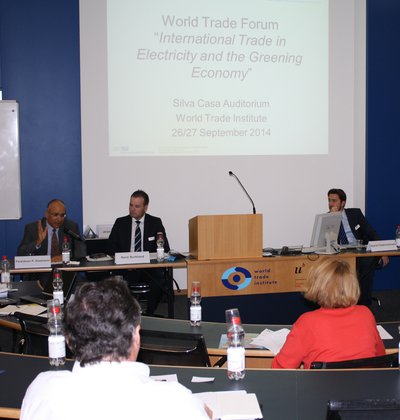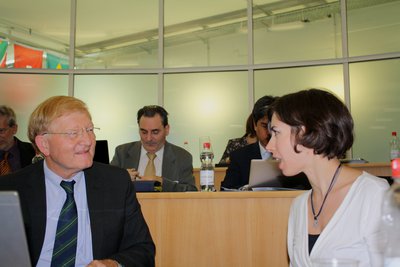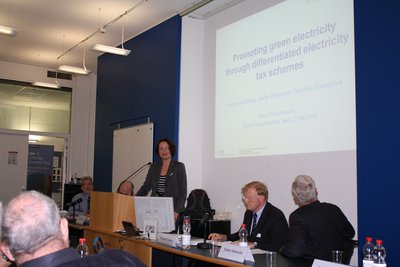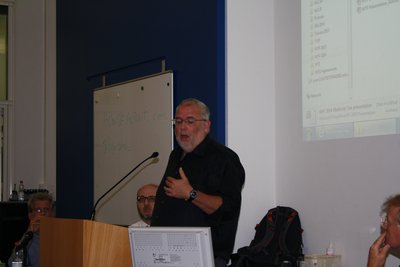30 Sep 2014
Green electricity and the international trade challenges
Commentators at the first panel
This year’s World Trade Forum, which ran from 26 to 27 September 2014 at the WTI, took as its theme “International Trade in Electricity and the Greening Economy”.
The Forum, organised by WTI post-doctoral researcher Ilaria Espa, was attended by practitioners and academics from around the world.
The electricity landscape is undergoing dramatic change: the world has witnessed a rapid increase in cross-border electricity trade as global electricity demand grows and countries seek to ensure an economically efficient and sustainable power system.
Yet it is still the case that most power is still generated by non-renewable sources, i.e. gas, oil and coal. And where renewables are used there is the problem that their flow is intermittent, meaning that it can be hard to ensure a constant electricity supply. Cross-border electricity trade can help reduce the need to fill the shortfall with power from conventional power plants. Summing up the aims of the conference in his opening comments, Professor Thomas Cottier of the WTI said it would consider what needs to be done so that people benefit from a more secure and sustainable flow of electricity, with the focus on two angles – trade and investment regulation.
“There has been a fundamental lack of serious attention to energy issues at the WTO. This conference is a necessary antidote to that,” said Robert Howse of New York University School of Law.
Green power and a global grid
Questions about the future of the electricity trade focus on the rise of renewable energy, which is seen as a means of mitigating greenhouse gas emissions from the electricity sector. Many governments wish to integrate renewable power into their transmission and distribution systems and offer tax or other incentives for its generation.
“My take is that the future will be increasingly distributive,” said Fereidoon Sioshansi of energy consultants Menlo. “Instead of producing a lot of power at centralised plants and shipping it long distances you can generate most of the power you need, perhaps through solar panels on your rooftop.”
On the other hand, the idea of a global grid enabling long-distance electricity trade has been gaining currency. The global grid would also absorb renewable energy, integrating it into transmission and distribution systems. But it requires high levels of investment and the modernisation of infrastructure, and this can be problematic, not least in the developing world.
“The main challenges of the electricity trade in Africa include financing, lack of capacity and planning and maintenance issues,” said Callixte Kambada of the African Development Bank, who made a contribution on the African regional experience.
Despite that African electricity was becoming increasingly interconnected to parts of southern Europe and the Middle East. “I think it’s only a matter of time before we have a global grid,” he said.
But Anders Plejdrup Houmoller, CEO of Houmoller Consulting in Denmark, cautioned that a global grid may not make economic sense. And even if it did, it could take decades to realise. “It took more than 30 years just to connect the east and west of Denmark by a sub-sea cable, so the sub-sea cable across the Atlantic that is being discussed would be an uphill struggle,” he said.
The proceedings will be published in the World Trade Forum book series published by Cambridge University Press.





